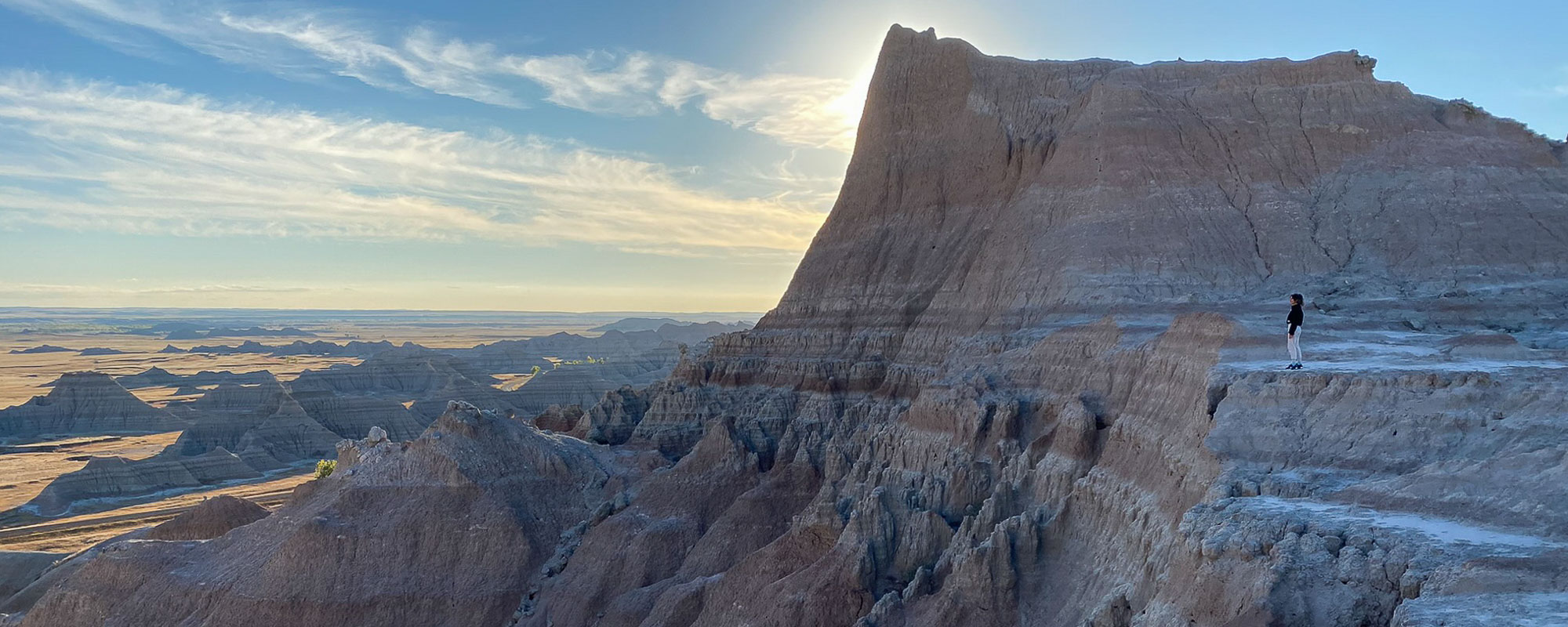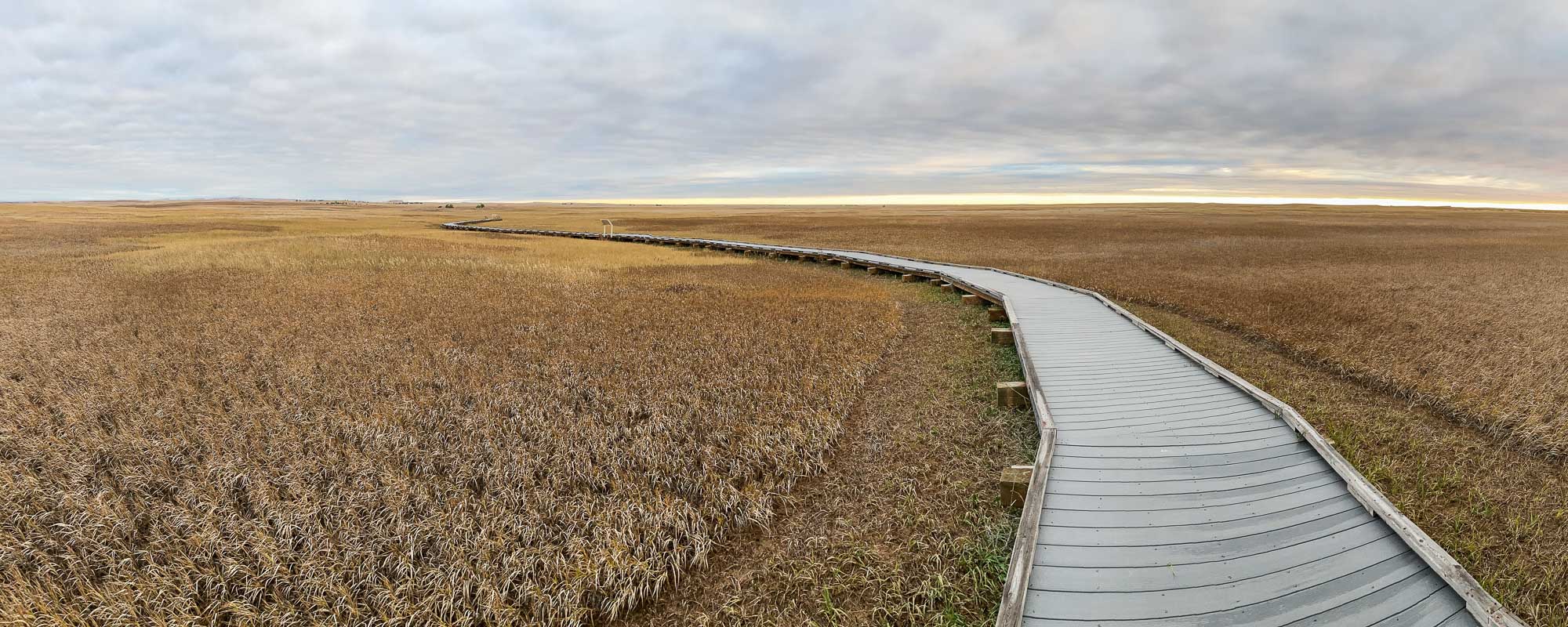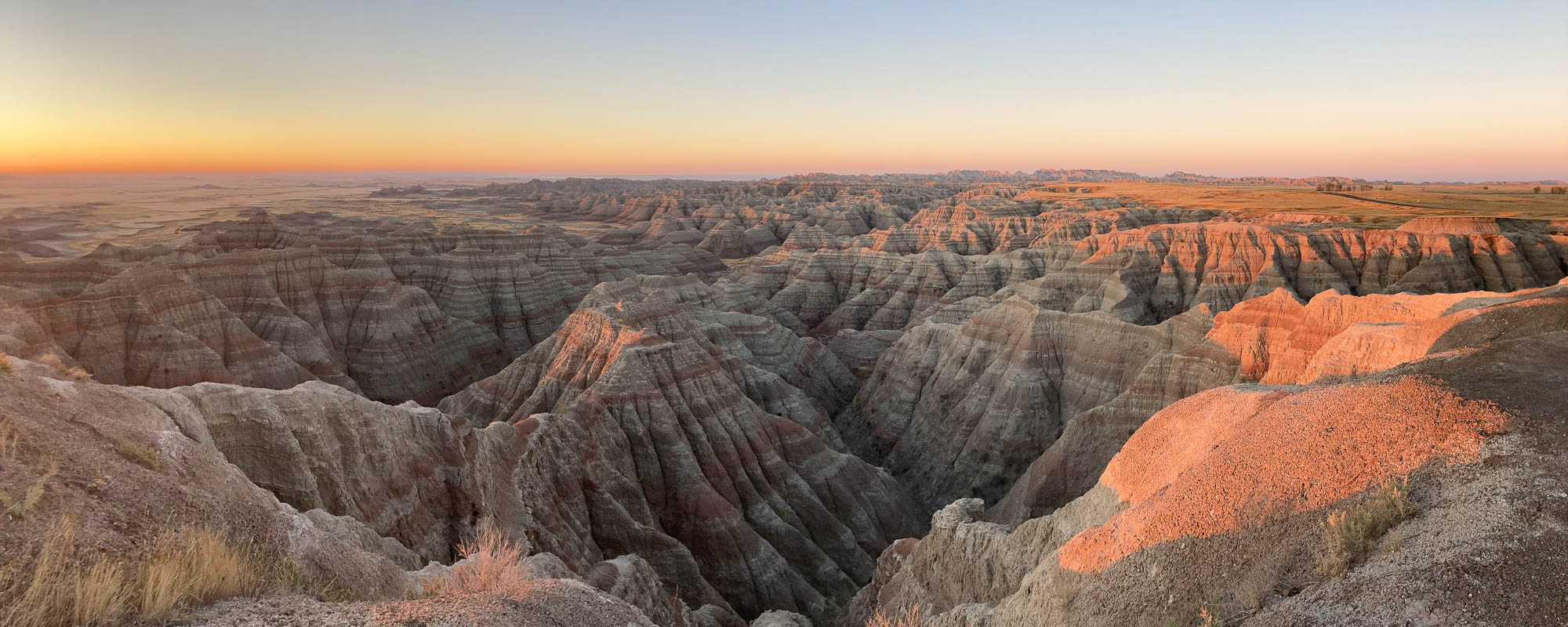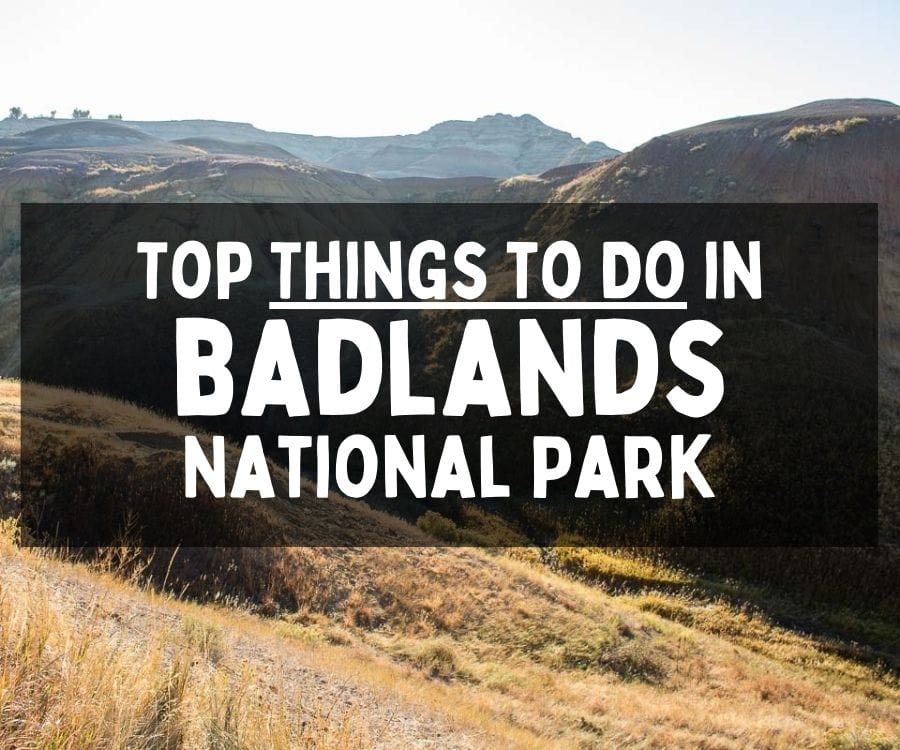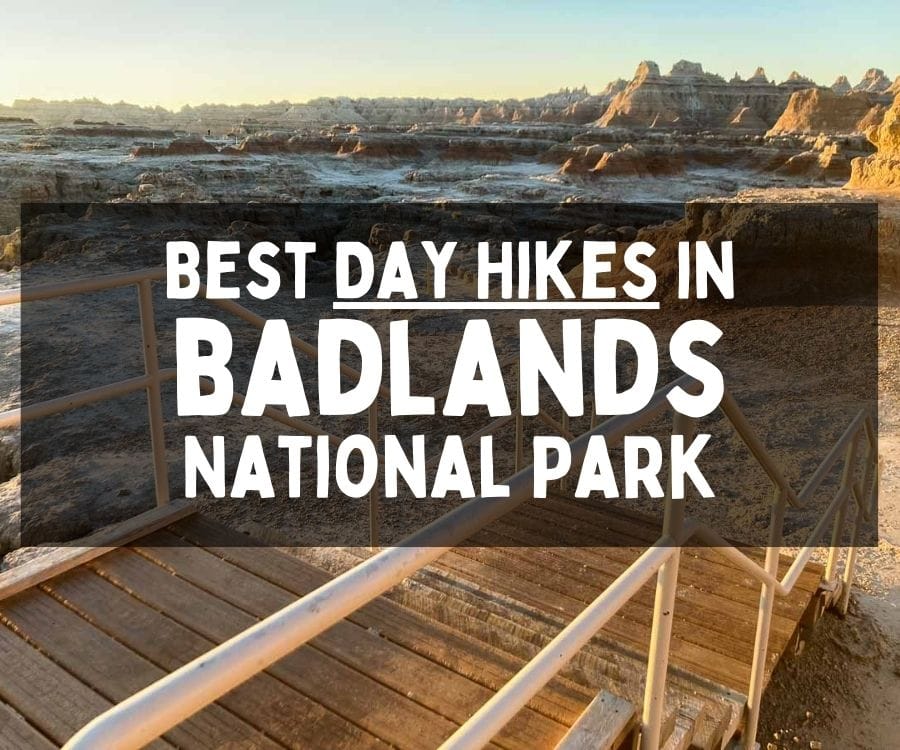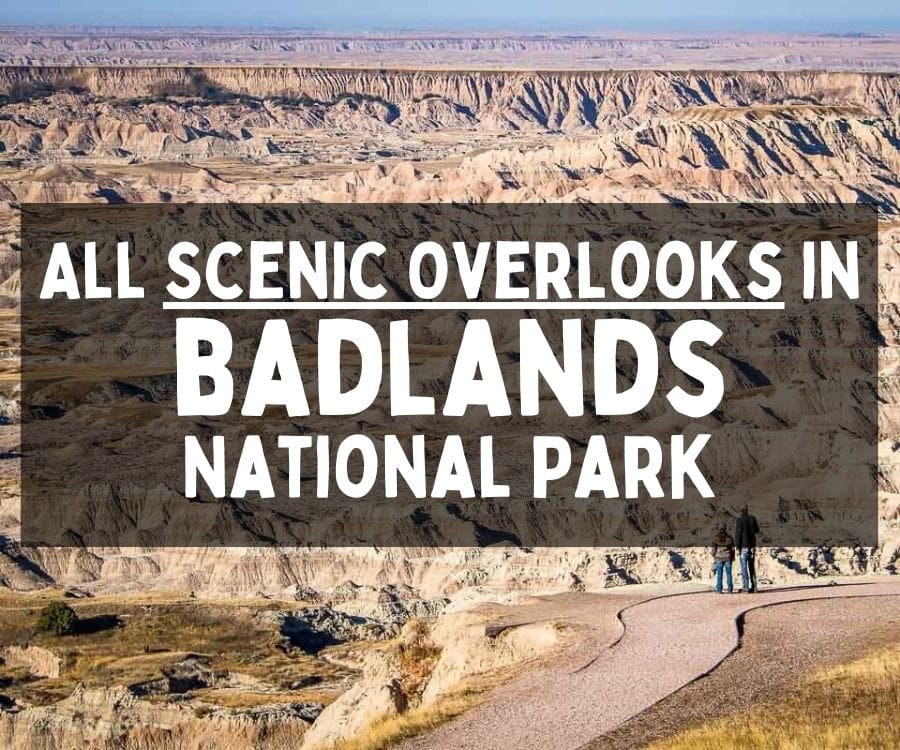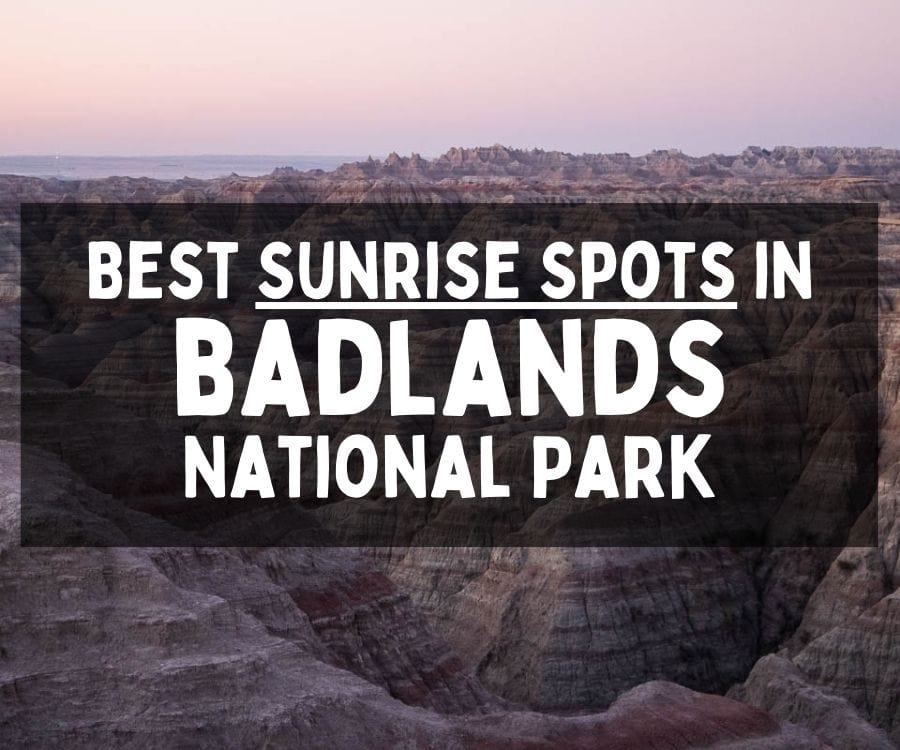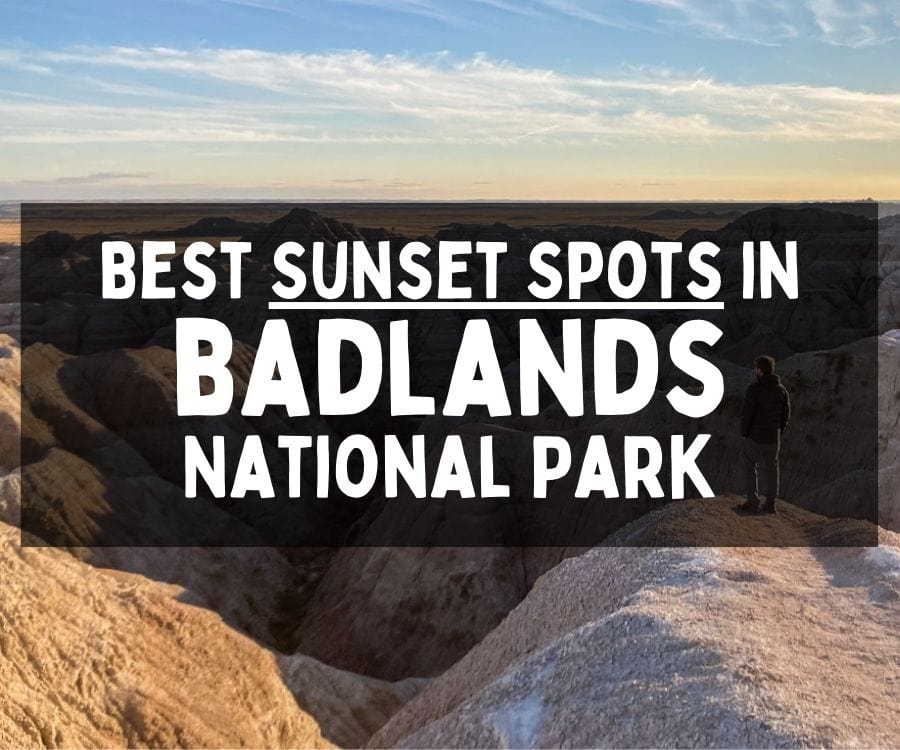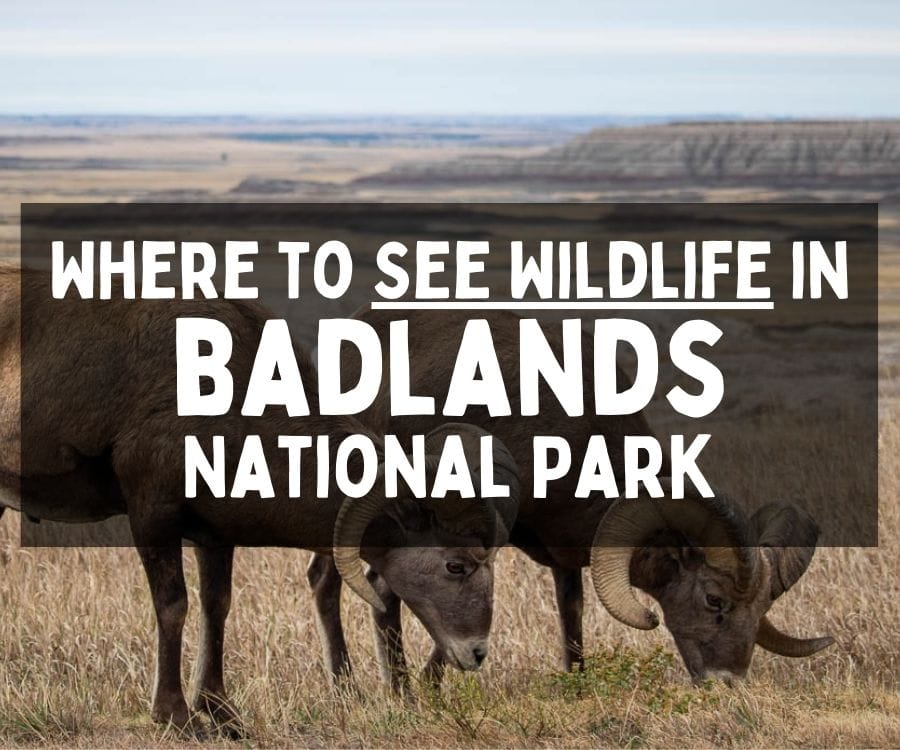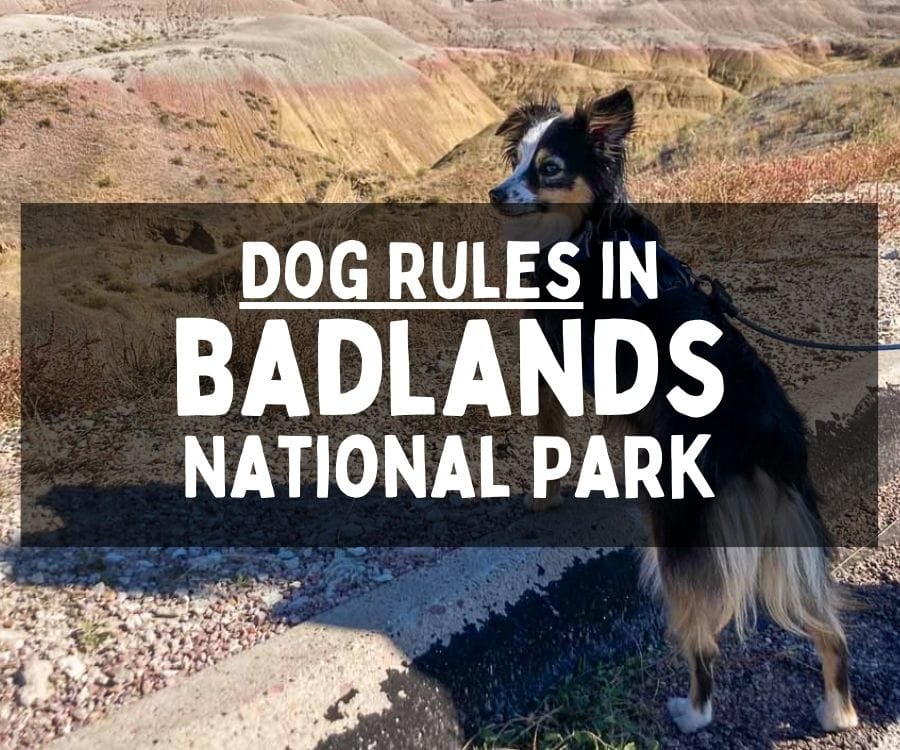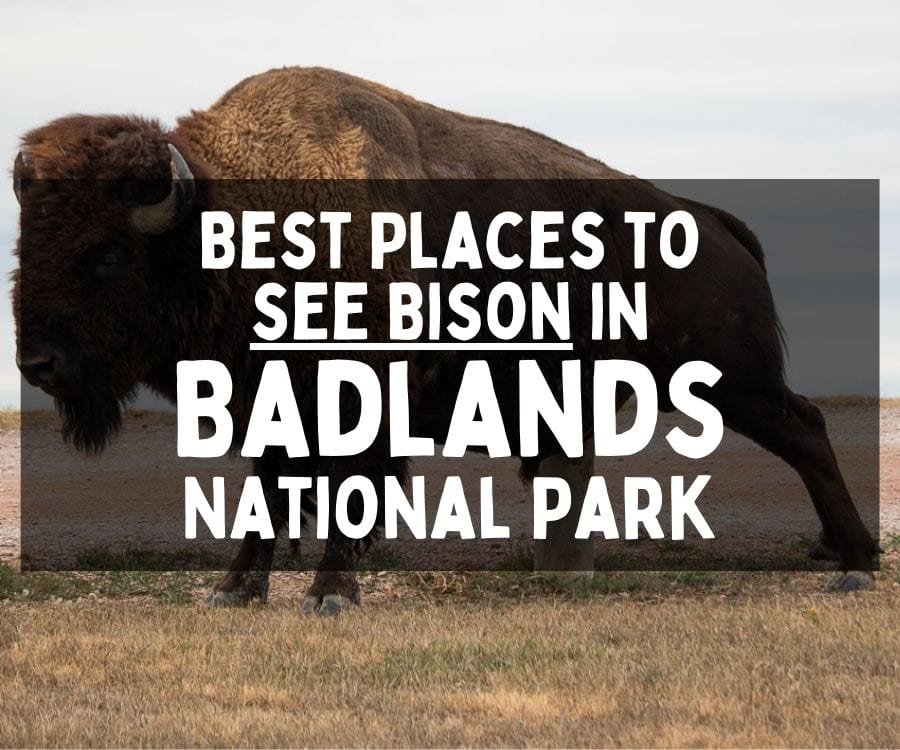Situated in southwestern South Dakota, Badlands National Park encompasses a marvelous landscape of buttes, razor-edged ridges and colorful eroded hills, as well as sprawling mixed-grass prairie, home to iconic North American wildlife and hiding ancient fossils.
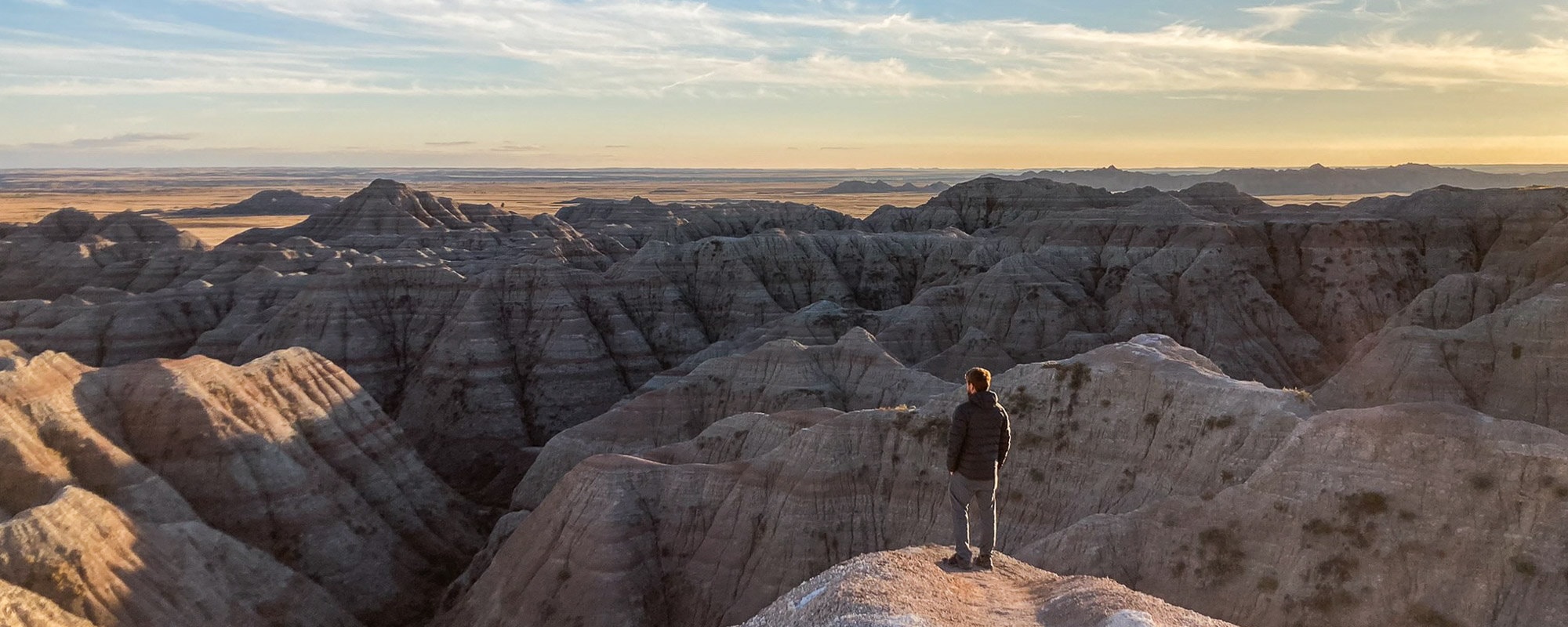
For many centuries, the Badlands of southwestern South Dakota have provided challenges to early pioneers, fascination to geologists and paleontologists, and awe to tourists. This incredibly rugged landscape is protected by Badlands National Park, centered on the famed Badlands Wall, which separates the upper from the lower prairie.
The Lakota, who now manage the park’s Stronghold Unit, knew the area as “mako sica.” French fur trappers referred to these impassable hills as “les mauvaises terres à traverser.” Both names mean “bad lands.”
Created by eons of erosion, the Badlands consist of innumerable color-banded hills, deep gullies, steep buttes, razor-edged ridges and rugged ravines. Each color in the hills represents a geological era, layers of ancient rock in which millions-year-old fossils are waiting to be found.
The fossils that have already been discovered in Badlands National Park number in the thousands, including extinct animals like Oreodonts, ancestors of modern-day horses, saber-toothed cats and ancient rhinoceroses.
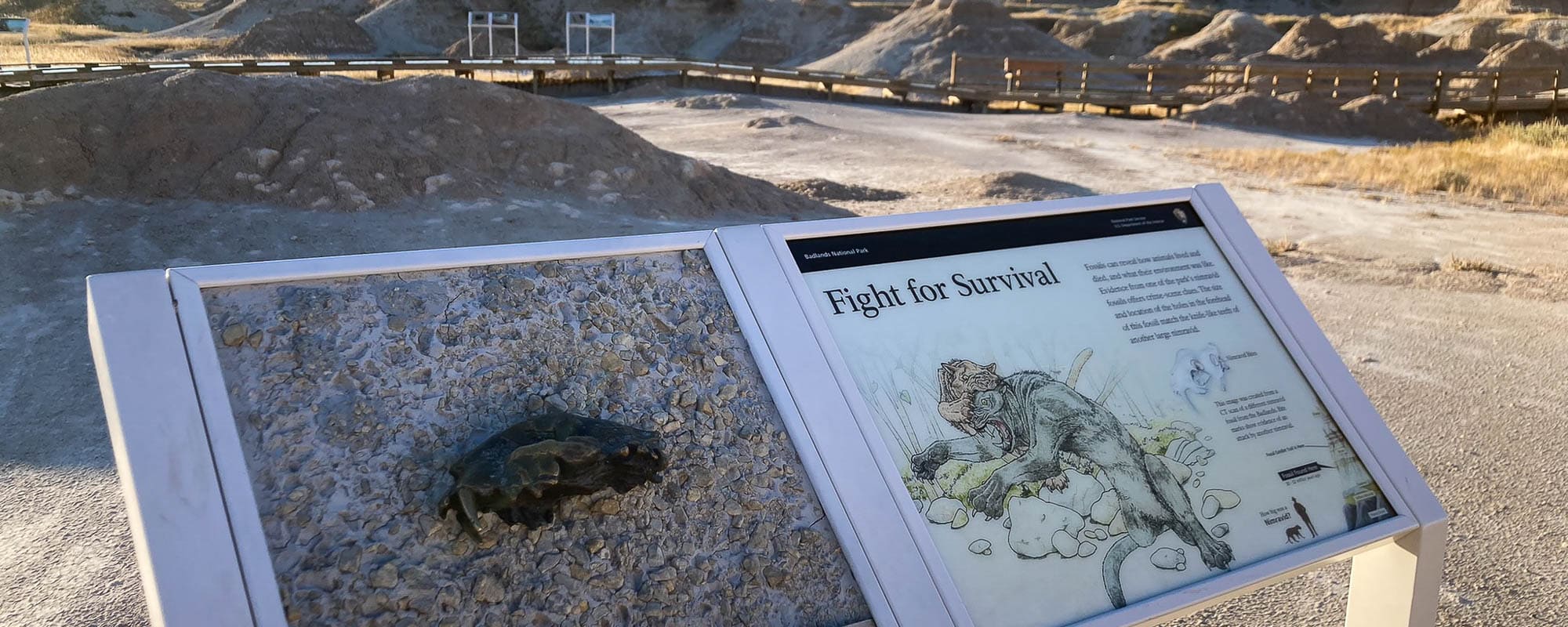
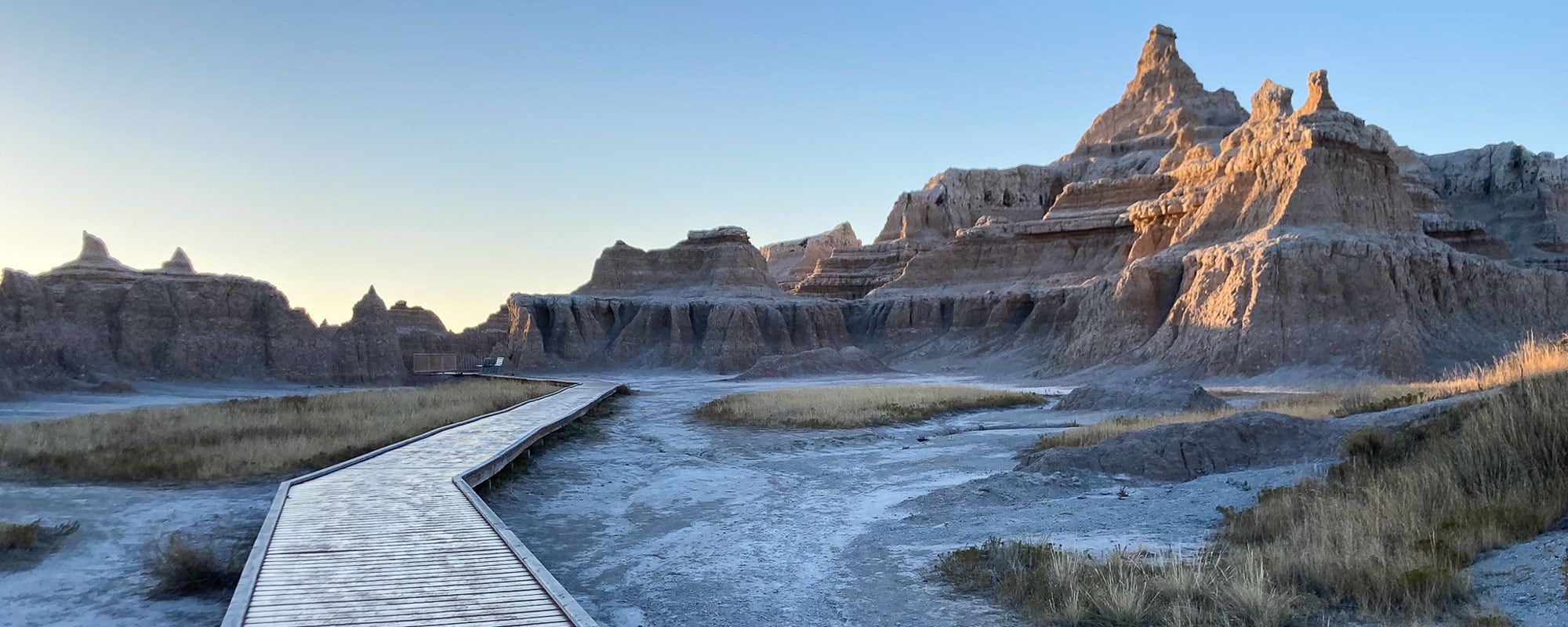
Nowadays, as the Badlands keep eroding away, fossils continue to be found throughout the park, by professional paleontologists and wandering hikers alike.
Visitors can explore this almost-otherworldly landscape on the scenic 30-mile Badlands Loop Road. Lined with more than a dozen overlooks and a handful of trailheads, it offers access to epic views and the wild Badlands backcountry.
In addition to the Badlands themselves, the park also encompasses one of America’s largest surviving tracts of intact mixed-grass prairie.
These endlessly rolling grasslands are home to American bison, prairie dogs, rattlesnakes, coyotes, bighorn sheep, mule deer and the extremely rare black-footed ferrets. Numerous birds and other animals thrive here, too.
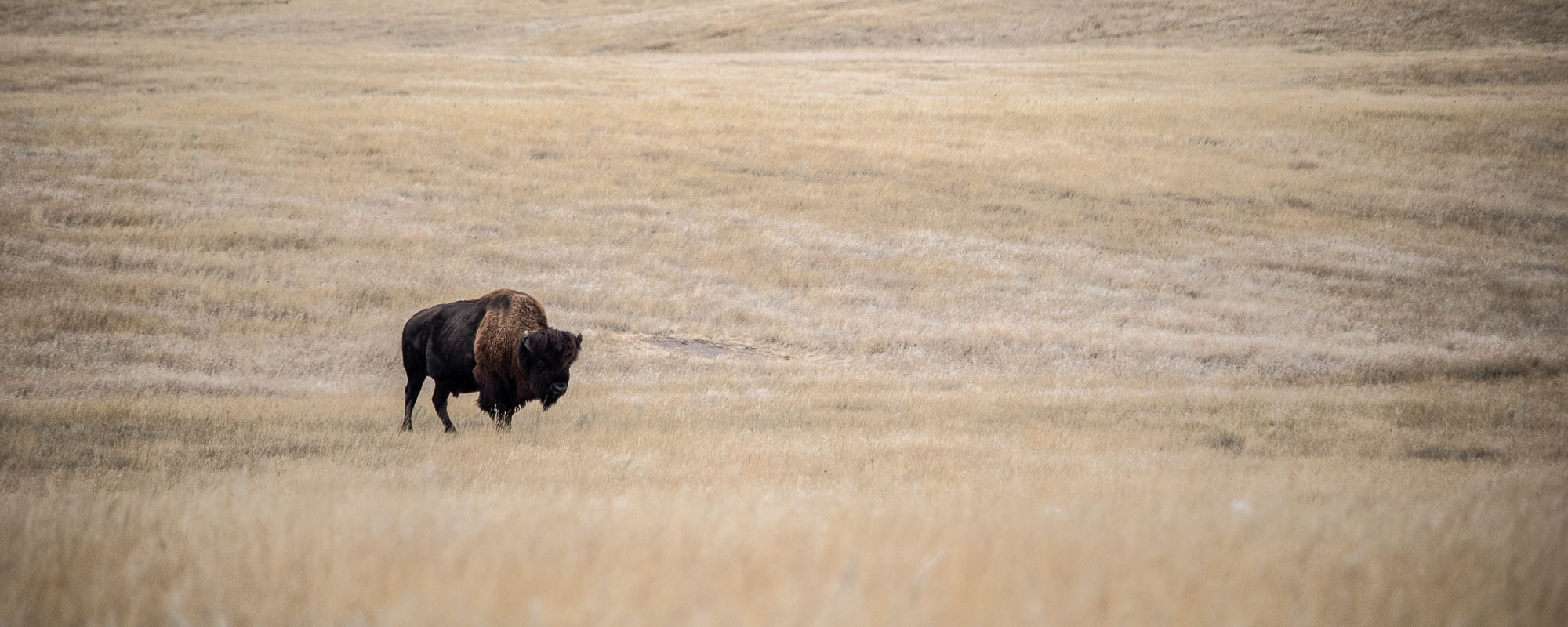
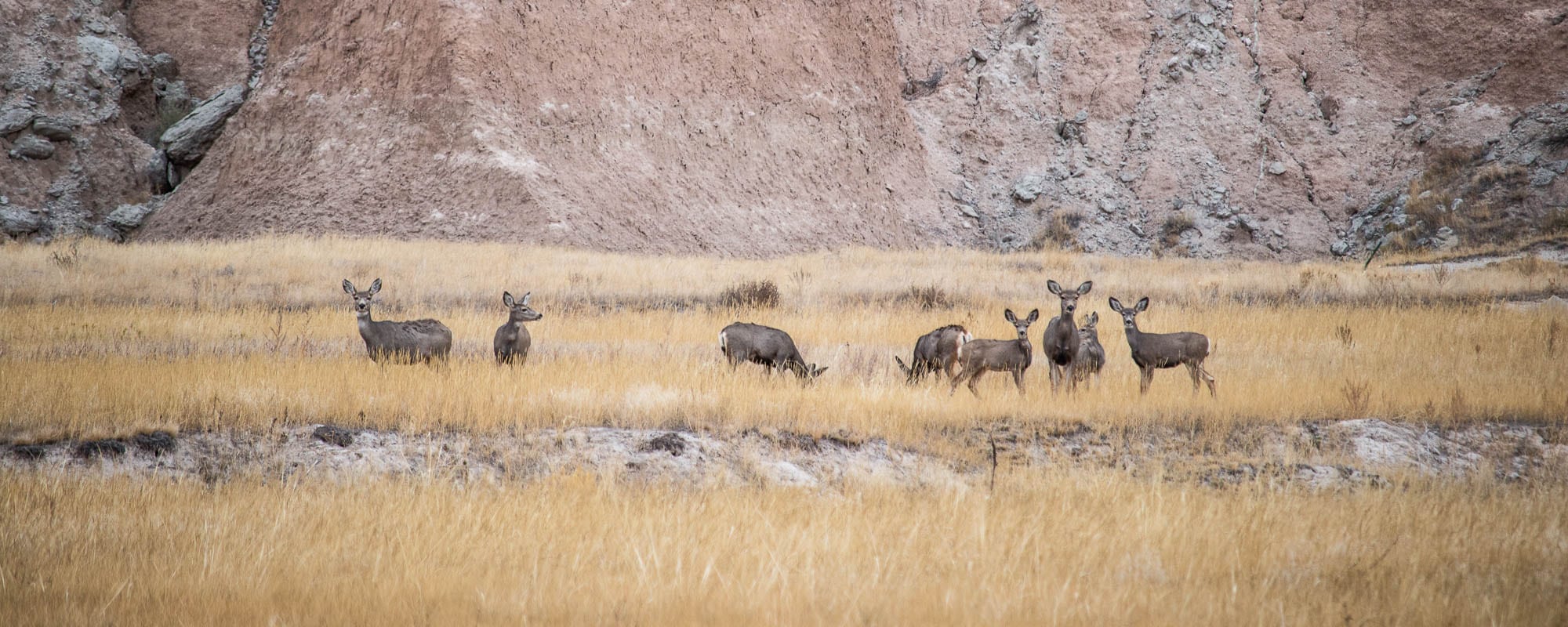
Many visitors drive through Badlands National Park on the Loop Road in a day. However, it’s well worth spending at least a night and an extra day in the area.
The night sky is absolutely spectacular in the park, while its sunrises and sunsets are also nothing short of unforgettable.
Although the number of hiking trails is relatively limited, it’s recommended to do at least two or three hikes to immerse yourself in this remarkable scenery even more. Many trails lead to viewpoints or past fascinating sites, while the backcountry is also open for unrestricted exploration.
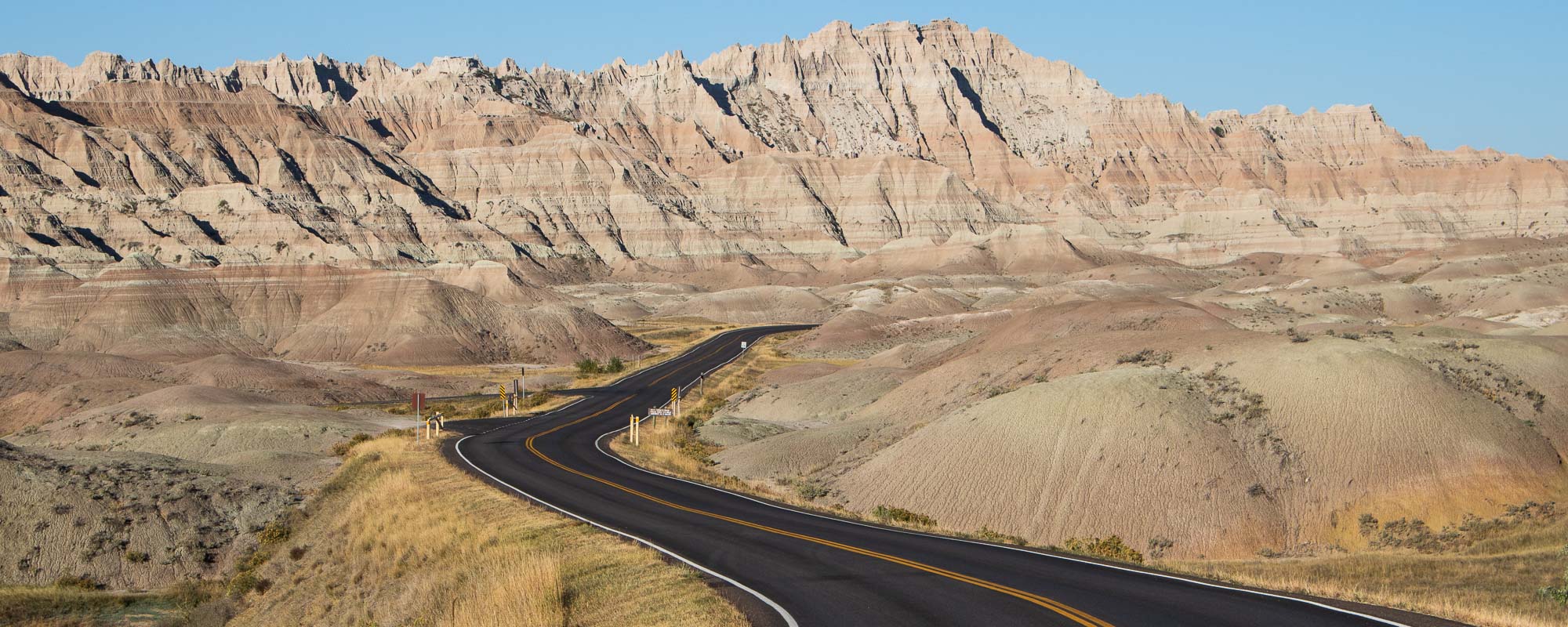
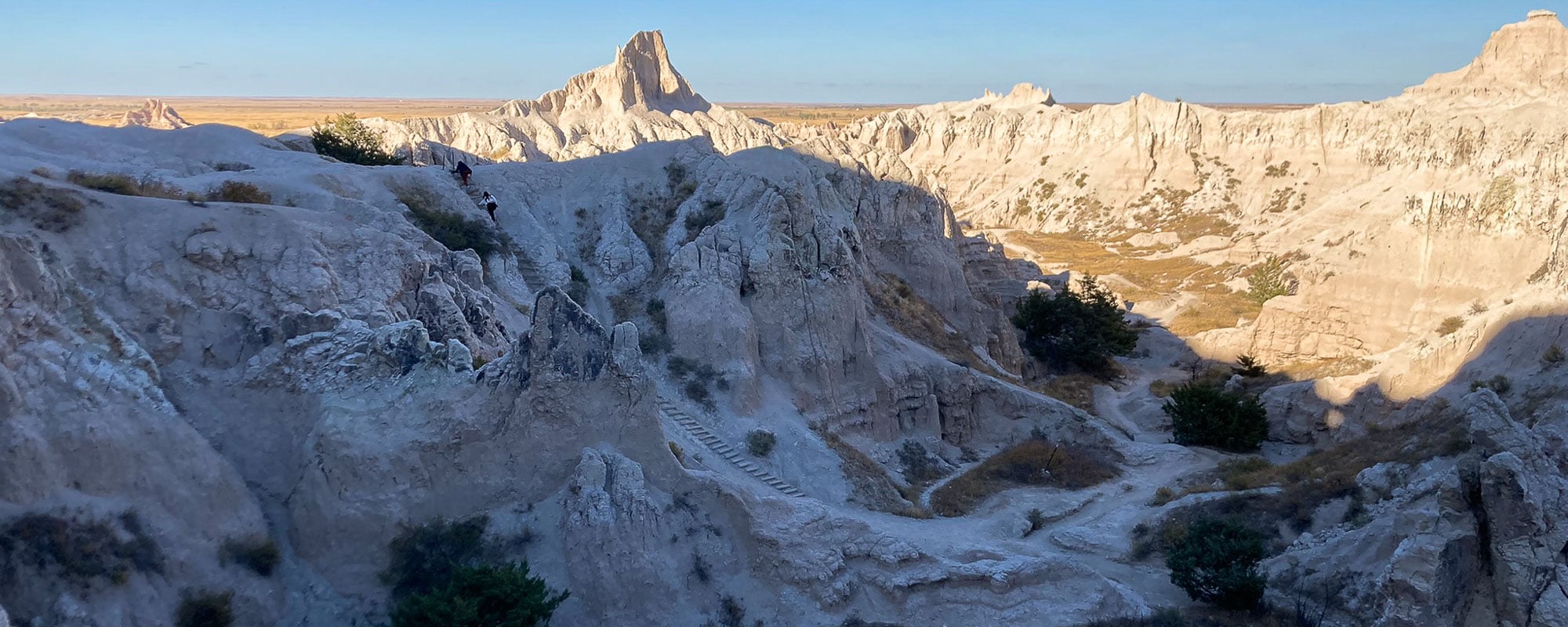
This Badlands National Park information page contains affiliate links. You can read more about our Terms of Use / Disclosure here.
Highlights of Badlands National Park
The magnificent landscapes of Badlands National Park attract all kinds of visitors, from motorists and photographers to backpackers, stargazers and (amateur) paleontologists. Highlights are plentiful in this spectacular park, warranting a stay of two or more days.
- Drive the scenic Badlands Loop Road
- Watch the sunrise or sunset from a panoramic overlook
- Hike the Door, Window and Notch trails
- See fossils on the Fossil Exhibit Trail
- Spot wildlife, including bison, prairie dogs, mule deer and coyotes, on the Sage Creek Rim Road
- Visit the (seasonal) Fossil Preparation Lab
- Camp at the Cedar Pass or Sage Creek campgrounds
- Admire an extraordinary star-peppered night sky
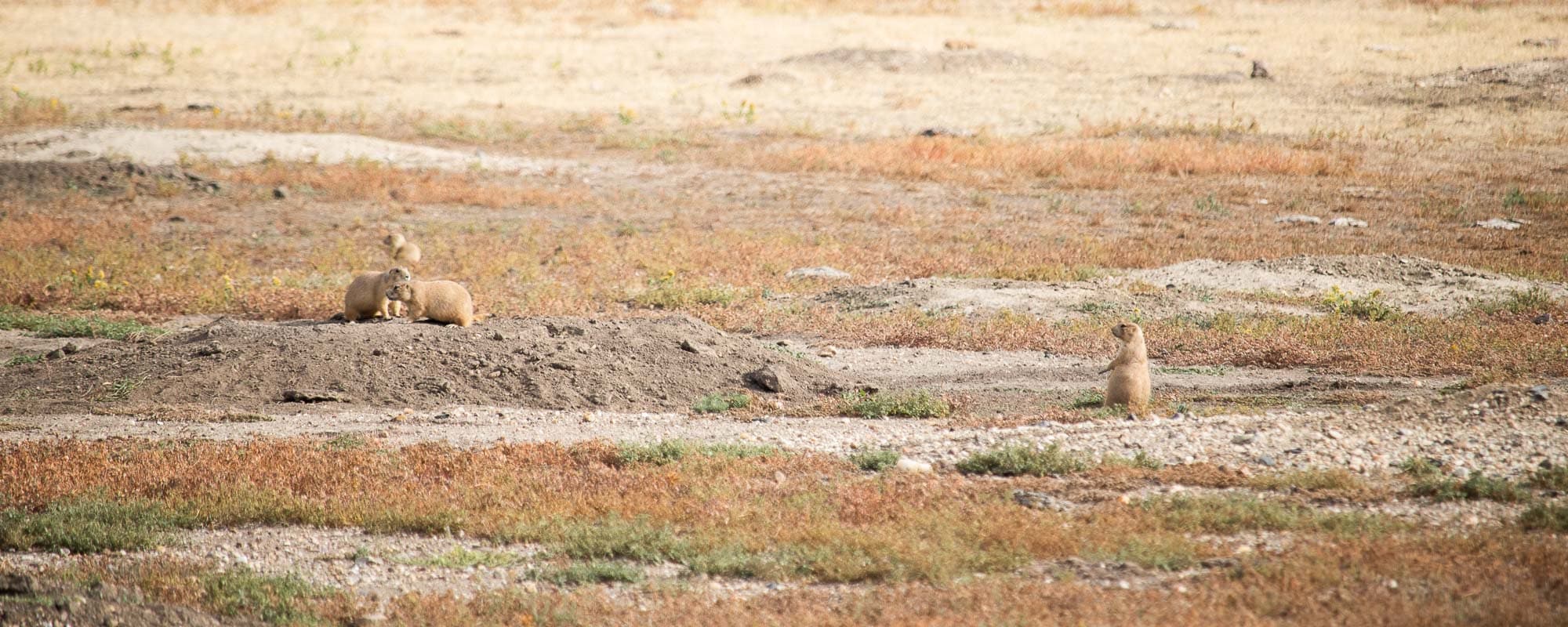
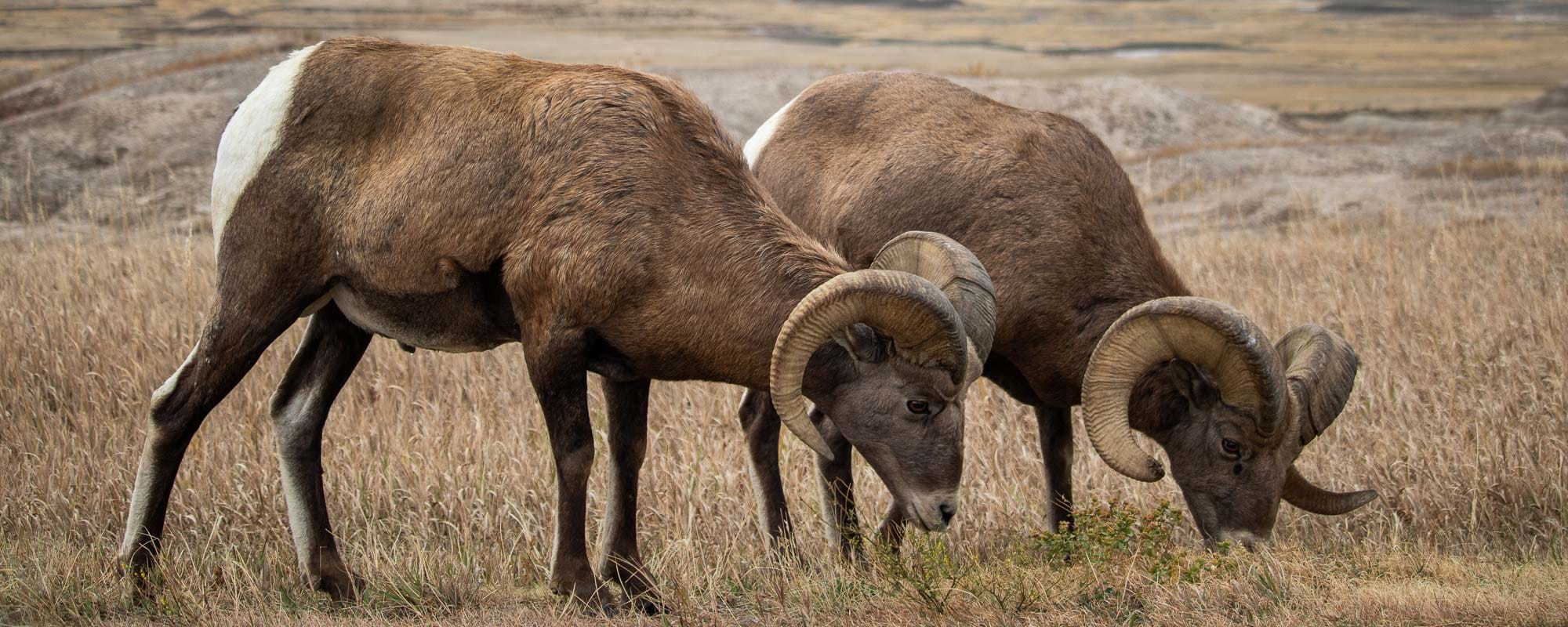
Useful Info
Location: Southwestern South Dakota
Nearest Towns: Rapid City and Wall, South Dakota
Area: 379.3 square miles (244,000 acres)
Annual Visitors (2022): 1,006,809
Features: Extraordinary collection of badlands, sprawling valleys and mixed-grass prairie, rich fossil deposits, historic homestead sites, spectacular views, scenic drives and myriad wildlife, including bison, prairie dogs, rattlesnakes, coyotes, bighorn sheep and mule deer
Top Attractions: Badlands Loop Road, Big Badlands Overlook, Yellow Mounds Overlook, Pinnacles Overlook, Fossil Exhibit Trail, Fossil Preparation Lab, Sage Creek Rim Road
Popular Activities: Scenic drives, hiking, backcountry exploration, camping, fossil hunting, sunrise viewing, wildlife watching
Suggested Stay: 2 days
Campgrounds:
- Cedar Pass Campground (96 sites)
- Sage Creek Campground (22 sites)
More Information:
Nearby National Parks:
- Wind Cave National Park
- Theodore Roosevelt National Park
- Yellowstone National Park
- Grand Teton National Park
